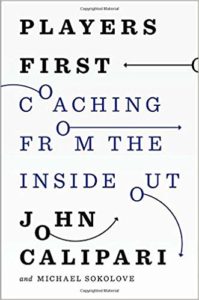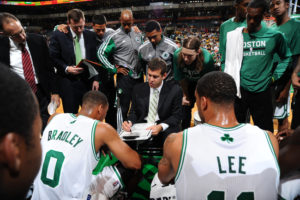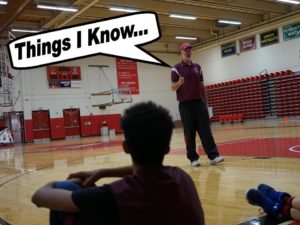
Basketball is a game of strategy, split-second decisions, and maximizing opportunities. One often-overlooked moment of opportunity is what I like to call the 5/4 advantage. This occurs when your team has five players on defense, while at least one offensive player is either unable to move (because they’ve picked up their dribble) or is temporarily out of play (because they’re taking the ball out of bounds).
If you can recognize and capitalize on these moments, the defensive team holds a distinct advantage and has a real opportunity to generate a turnover or even steal the ball outright. Let’s explore how to leverage this advantage, break down the defensive strategies that work best, and discuss how to train your team to execute these situations flawlessly.
Why the 5/4 Advantage is Powerful
Imagine this scenario: It’s the end of the game. Your team is down by one (or two… or even three). There are only seconds left on the clock, and your opponent is inbounding the ball. How many times have you seen a game where the defense, in this exact situation, steals the inbound pass, races downcourt, and takes the winning shot?
Now think about this: If your team can do it in the final seconds of a game, why can’t you do it during any other point? Why wait for desperation at the buzzer when you could apply pressure on the inbounds pass—or capitalize on a trapped player—at any moment?
Here’s the truth: In the early parts of the game, your opponent isn’t expecting you to apply intense pressure. They assume those moments are routine. This is your opportunity to catch them off-guard and make them uncomfortable. When executed correctly, the 5/4 advantage can turn momentum in your favor at any point in the game.
Leveraging the 5/4 Advantage
The 5/4 advantage can occur in two main situations:
- When an offensive player picks up their dribble.
- When the ball is being inbounded.
Let’s break down how to defend in each situation and use the advantage to create turnovers.
Situation 1: Picked-Up Dribble
When an offensive player picks up their dribble, they immediately lose mobility. This is the moment to attack as a defense.
The Ball Defender’s Role:
The defender guarding the ball should:
- Close the gap quickly: Get as close as possible to the offensive player without fouling. The goal is to make it difficult for them to see their teammates or find an open passing lane.
- Mirror the ball: Keep your hands up and move them to mirror the ball’s movements. This makes it harder for the offensive player to make a clean pass. Avoid reaching, as this can lead to unnecessary fouls.
- Communicate aggressively: Many teams shout something like “BALL” or “STEAL” to create confusion and increase pressure on the offensive player.
The Rest of the Defense:
- Tighten your coverage: Defenders guarding off-ball players should step closer to their assignments and anticipate passes. Focus on jumping into passing lanes and forcing risky decisions.
- Force a 5-second violation: Remember, the offensive player only has 5 seconds to make a pass. If you can prevent them from finding an open teammate, you’ll force a turnover. Learn more here… Understanding Basketball Rules: Five-Second Violation – Explanation of key rules like the five-second violation and how they can be used strategically.
Key Reminder:
You and your team can do anything for 5 seconds. Stay disciplined, apply pressure, and force the offense to crack under the weight of your defense.
Situation 2: Inbounds Pass
The inbounds pass is one of the most critical moments where the 5/4 advantage comes into play. Because the inbounder cannot move and is removed from the immediate play, your team effectively has a numbers advantage on the court.
Defensive Strategies for Inbounds Plays:
- Double-Team the Inbounder:
Place your two tallest and most active defenders (usually your 4 and 5) on the inbounder. Their job is to:- Use their size and wingspan to block passing lanes.
- Mirror the inbounder’s eyes and body language to anticipate the pass.
- Force the inbounder to throw a lob or a rushed pass, creating an opportunity for a steal or deflection.
- Deny the Primary Receiver:
The point guard (1) should focus on denying the primary ball handler, who is likely trying to get open near half-court. Stay close, face guard, and use active hands to disrupt the pass. - Jump the Passing Lanes:
Assign one player—often your small forward (3)—to act as a free safety. This player reads the inbounder’s eyes and body language to anticipate the pass and jump into the passing lane for a potential steal. - Protect Against Over-the-Top Passes:
The center (5) should maintain awareness of the paint, ready to recover quickly if the inbounder attempts a long, over-the-top pass. This prevents easy layups or fast-break opportunities.
Training the 5/4 Advantage
To make the 5/4 advantage a reliable weapon, you need to prepare your team to execute under pressure. Here’s how:
- Practice Situational Defense:
Incorporate drills that simulate both picked-up dribble situations and inbounds plays. Teach players to communicate, close gaps, and anticipate passes. - Condition for Intensity:
Defending for 5 seconds may sound easy, but it requires maximum effort and focus. Use short, high-intensity defensive drills to build your team’s stamina and discipline. - Film Study:
Watch game footage to identify tendencies in opponents’ inbound plays and passing patterns. This will help your team anticipate and disrupt these plays during games. - Emphasize Communication:
Teach your players to communicate loudly and effectively during 5/4 situations. Phrases like “deny,” “trap,” or “steal” can heighten the intensity and coordination of your defense.
Why It Works
The 5/4 advantage forces the offense into high-pressure situations where mistakes are more likely. When the ball handler or inbounder is under duress, they’re more likely to:
- Throw a bad pass.
- Commit a turnover.
- Hesitate and incur a 5-second violation.
Your team can capitalize on these mistakes to create momentum-shifting plays and generate easy scoring opportunities.
One last parting word on the 5/4 Advantage…
The 5/4 advantage is one of the most underutilized strategies in basketball. Whether it’s a trapped ball handler or an inbounds pass, recognizing and exploiting these moments can swing the game in your favor.
The beauty of this approach is that it works at any time, not just in the closing seconds of a game. By preparing your team to execute the 5/4 advantage effectively, you’ll create a defense that opponents dread facing—one that disrupts their rhythm and seizes opportunities at every turn.
So, the next time you see an opponent pick up their dribble or prepare to inbound the ball, remember this: You’ve got the advantage.
Now go take the ball.
— Coach Wheeler






 If you want to coach a varsity team or even a college team, it is inevitable that you will, at one time or another, find yourself in front of an
If you want to coach a varsity team or even a college team, it is inevitable that you will, at one time or another, find yourself in front of an  This post is about the “Things I Know” when it comes playing basketball “the correct way”, i.e. the way that I like my teams to play. Each of these short “Things I Know” is followed by an action that players should carry out in the described situation.
This post is about the “Things I Know” when it comes playing basketball “the correct way”, i.e. the way that I like my teams to play. Each of these short “Things I Know” is followed by an action that players should carry out in the described situation. I have started to think about how I might help MOTIVATED basketball players with their summer development plan. In an ideal world, I would gather a group of 8-10 players who would meet at an outside court every morning at sunrise (5am? 6am?) to get a thousand shots up and work on their conditioning, moves and defensive skills.
I have started to think about how I might help MOTIVATED basketball players with their summer development plan. In an ideal world, I would gather a group of 8-10 players who would meet at an outside court every morning at sunrise (5am? 6am?) to get a thousand shots up and work on their conditioning, moves and defensive skills.